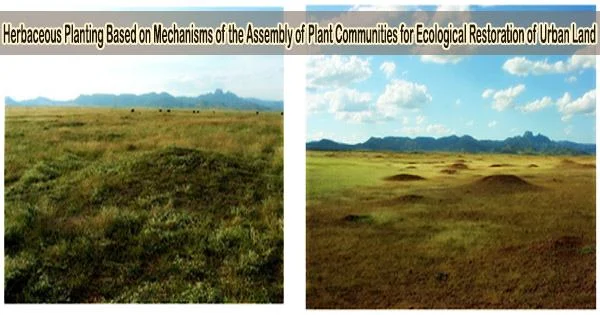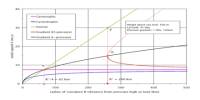Ecological restoration is the process of assisting degraded, harmed, or destroyed ecosystems in their recovery and repair. It aims to lessen the negative effects of human activities, such as habitat loss, pollution, deforestation, and climate change, and to encourage the recovery of natural habitats and biodiversity.
Brownfield restoration has become a cutting-edge topic in the study of urban ecosystem governance. By maximizing brownfield ecosystems through effective bioremediation procedures, urban landscapes and habitats can have a healthy ecological potential.
The delayed development of brownfield vegetation restoration theory and practices, species selection based on a single causation, and disregard for the construction of community structure and ecological services are currently the main obstacles to brownfield restoration.
The ecological restoration of urban brownfields is proposed in this research using a novel technological framework of herbaceous planting, which involves in-situ planting, micro-topographic design, adaptive species selection, symbiosis structure design, and establishing quasi-natural community structure. As theoretical support, it introduces the mechanisms of plant community assembly.
In this study, a brownfield site in Hechuan District, Chongqing City, was chosen for the application of herbaceous planting, and the ecological advantages following restoration were assessed.
The research showed that vegetation on severely degraded brownfields has transformed into a herbaceous community with a multi-species symbiosis and a stable structure, effectively optimizing its ecological tasks like stormwater retention and biodiversity protection.
This study offers technical guidance and scientific backing for brownfield restoration in cities, as well as improvements to urban ecological networks and ecosystem resilience.
This research suggested a vegetation assembly pattern to promote the coexistence of plants and animals by replicating natural community structure in order to establish a well-coexisting and self-maintaining herbaceous community with better biodiversity and attractive landscapes. The planting on the study area was implemented spanning from October 2017 to March 2018.
The ecological planting design of the brownfield in Senkai Road, Hechuan district, Chongqing City in this paper is an exploratory research addressing complicated environmental challenges in brownfields, including infertile soil, pollution, and malignant weeds.
After restoration, the area developed into a robust herbaceous community with a better structure and aesthetics of the landscape, performing tasks like runoff retention and biodiversity conservation. Before, the region had a serious lack of species diversity and ecosystem services, making it vulnerable to environmental stress and overrun by invasive species.
For the ecological restoration of urban brownfields, an innovative application case in China combines the technical framework of in-situ planting of herbaceous plants with micro-topographic design, adaptive species selection, symbiosis structure design, and the construction of quasi-nature community structures.
This project aims to provide scientific evidence and a useful technical paradigm for brownfield habitat restoration, biodiversity protection, and aesthetic promotion in order to increase the urban ecological network and ecosystem resilience.
















